Along the River Tees, almost all of the physical evidence of shipbuilding is gone – although in 2017 one yard did re-open (follow the links at the bottom to learn more about this).
The Tees shipbuilding heritage can be seen in the towns of Stockton-on-Tees, Billingham and Middlesbrough if you know where to look. Pubs such as the “Talpore” celebrate the building of the troop steamer which was launched by Pearce & Co. in 1860 at Stockton.
Local shipbuilding entrepreneur Robert Ropner is commemorated at Ropner Park. Castle Quay, the Teesquay Millennium Footbridge and many other street names reflect the huge impact the River Tees and in particular the shipbuilding industry had on the growth and development of this area.
Origins and growth
On a small scale, shipbuilding on the Tees can be traced back to medieval times, but it flourished during the 17th century. By the 18th century the commercial shipbuilding of small wooden ships was well established. Half way through the 19th century, wooden ships were replaced by iron ships. Sailing ships were replaced by steam ships.
The shipbuilding industry benefited from the Industrial Revolution. The commissioning of the Darlington and Stockton Railway meant that the town expanded and developed better links, and so did the shipyards.
Several shipyards opened during the first half of the 19th century. The industry often benefited from war: a number of ships were built on the Tees for the Confederate Government during the American War of Independence.
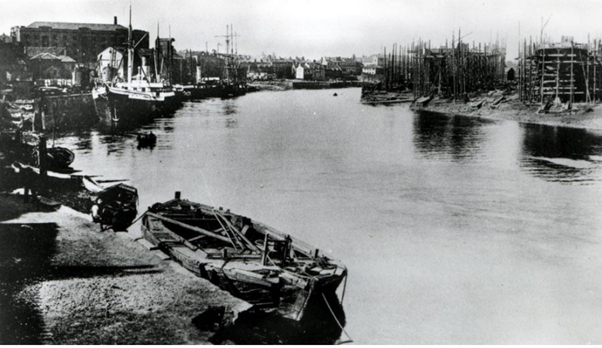
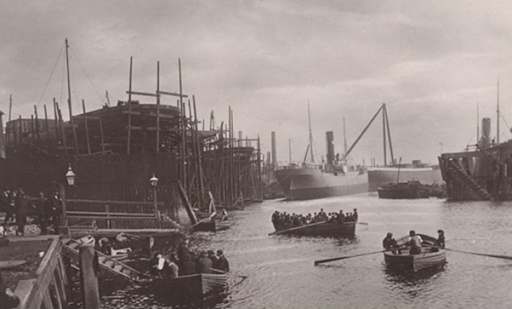
The Tees in the 1900s (images courtesy of Stockton Reference Library).
Iron ships on the Tees
The South Stockton Iron shipbuilding Co. built the first iron ship on the Tees, “The Advance”, in 1854. Pearce and Lockwood later took over the Yard. In 1888 Robert Ropner bought the yard and by 1895 it had become the third largest in the country. Ropner and Sons went from strength to strength and prior to WW1 employed 1,500 people. It closed in 1928 as a result of the post-war slump and effects of the Wall Street Crash.
.png)
Tees shipbuilding in the 1920s (images courtesy of Stockton Reference Library).
Another yard, Haverton Hill, was built on reclaimed tidal land during the war in 1917. Even though the yard was not completed the first keel was laid in 1918. Lord Furness, who owned the yard, built a village of 531 houses in 438 days for his ship workers who produced mainly colliers, whalers, schooners and tramps during the 1920s and 30s. Order books were full during the Second World War and business boomed.
Modernisation - 1960s and onwards
In 1963 Haverton Hill was modernised so that supertankers could be built, indicating a shift in demand. However, in 1968 the yard closed and over 3,000 workers lost their jobs. Despite a merger between Furness and Swan Hunters, the yard could only limp on until its final closure in 1979.
Smith’s Docks closed in 1987.
"Back then we thought we had a job for life"
This article explains how devastating the end of the shipbuilding was for workers in the 1980s:
https://www.gazettelive.co.uk/news/local-news/back-thought-job-life-3850672
A recent revival
Although in its infant stages, there are hopes that shipbuilding is set to return to the Tees and many feel that the future is bright for the industry. You can read more about this by following the link below.
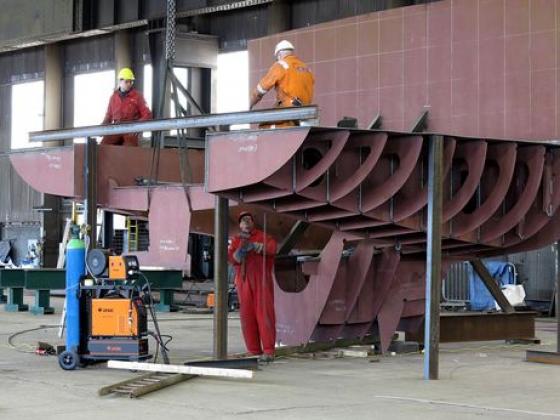
Gazette Live article on bright future of Tees as new industry begins, 8 years after closures.
(External link)
Gazette Live article on how the future is bright for the Tees as shipbuilding returns to its banks after an eight year hiatus.
Macdonald Offshore and Marine have taken over the facility where Teesside's last ship was completed 8 years ago.
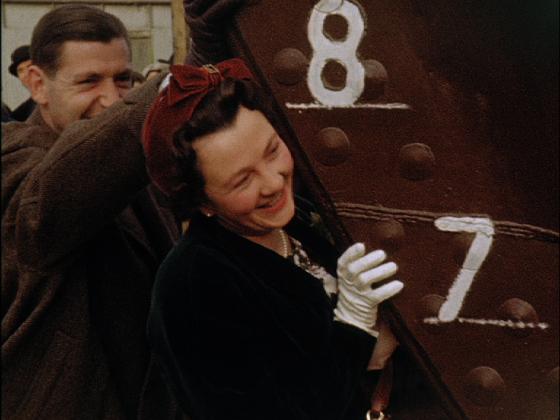
Launch of the Teesfield
(External link)
Launch of the Teesfield (1959). A silent film that marks the launch of the Teesfield from Furness Shipbuilding Co Ltd in Stockton on Tees.
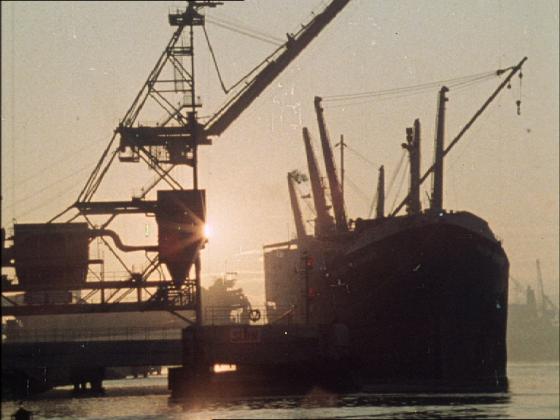
River Work
(External link)
River Work (1975) is an 'impressionistic record from dawn till dusk of the sights and sounds of working life on the River Tees', made by students at Teesside College of Art, Brian Bryne, David Eadington and Roger Schindler. This film looks at the range of activity on the River Tees, including the work of the Tees Harbour Port Authority, dredging activities and oil platform manufacture.

Tees Built Ships
(External link)
Teesbuiltships is one site set up by the SSRT, or Shipping and Shipbuilding Research Trust. Established as a Charitable Trust in December 2014 by a small group of enthusiasts the site provides invaluable information to ensure that the maritime heritage of the Tees (and other areas) is preserved and celebrated.